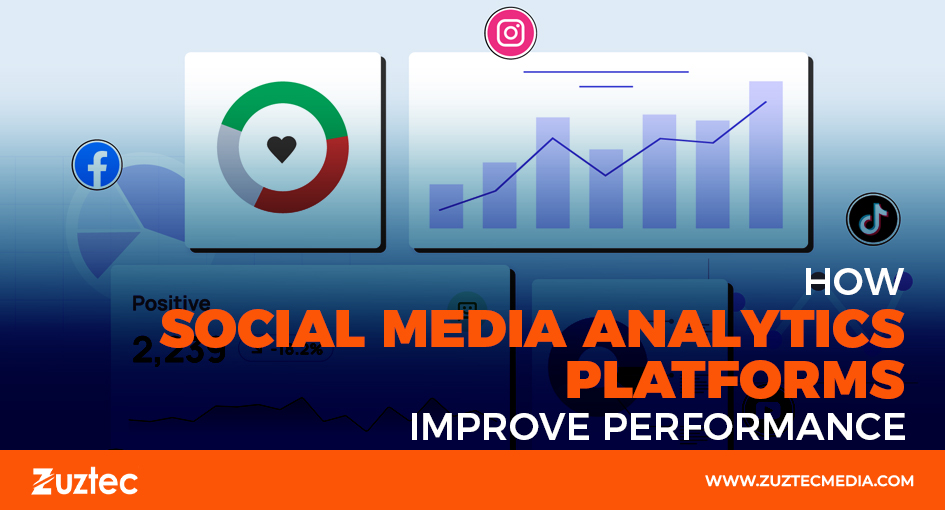
How Social Media Analytics Platforms Improve Performance
Understanding the performance of content on social media is crucial for any brand looking to grow online. With so much data generated daily across platforms like Instagram, Facebook, LinkedIn, and TikTok, brands need smart tools to track what works and what doesn’t. This is where social media analytics platforms come in. These tools provide valuable insights that help businesses optimize their strategies, improve engagement, and make informed decisions.
At the heart of social media success is the ability to measure performance accurately. Likes, shares, comments, click-through rates, and follower growth are only surface-level indicators. Deeper insights, such as audience demographics, content sentiment, and engagement patterns over time, help brands shape their messaging more effectively. Analytics platforms collect and organize all this data, giving marketers a clear view of how their content performs.
Instead of manually pulling data from each social network, everything is available in one dashboard. These platforms also allow marketers to track competitor performance, discover industry trends, and measure ROI from social media campaigns. This makes it easier to fine-tune efforts and stay ahead in the fast-paced digital landscape.
Whether you’re managing one channel or several, analytics platforms make social media efforts more strategic. They turn raw numbers into actionable insights that guide content planning, advertising spend, and customer engagement. For brands aiming to grow and stay relevant, these tools are no longer optional—they’re essential to long-term success.
Understanding Social Media Analytics Platforms
These platforms serve as centralized hubs where marketers can track the performance of their content and gain real-time insights. They go far beyond simply counting likes or followers and help businesses understand how audiences are responding to their messaging.
Different platforms offer different features, but most allow users to track engagement metrics, reach, impressions, and audience demographics. More advanced tools provide sentiment analysis, hashtag tracking, and competitor benchmarking. These features help marketers evaluate campaign effectiveness and make data-driven decisions.
Popular social media platforms include Hootsuite, Sprout Social, Buffer, and Brandwatch. Each offers a unique set of tools and reporting capabilities, depending on a business’s size and goals. Smaller companies may prefer user-friendly dashboards and simple reports, while larger enterprises often need customizable analytics and integration with customer relationship management tools.
Choosing the right platform depends on your goals and where your audience spends their time. For example, a visual-first brand might prioritize Instagram analytics, while a B2B company may focus more on LinkedIn engagement. In either case, these tools provide clarity in a noisy digital world and help sharpen your overall strategy.
Choosing The Right Metrics For Success
Not all metrics are created equal. When using analytics platforms, it’s important to focus on metrics that align with your business goals. Vanity metrics, like likes and views, may look impressive, but don’t always indicate real engagement or conversion. Instead, key performance indicators (KPIs) should be tailored to specific campaign objectives.
For brand awareness campaigns, impressions, reach, and share of voice are important. If the goal is lead generation or sales, then click-through rates, conversion rates, and cost per acquisition become more relevant. Metrics like engagement rate (interactions divided by total followers) can help gauge how well your content resonates with the audience.
Using historical data, marketers can test different approaches and fine-tune their strategy. A/B testing, performance forecasting, and campaign comparisons become much easier when reliable data is readily available. This level of precision helps brands get better results while spending less time and money on guesswork.
How Analytics Inform Smarter Content Strategies
By analyzing which posts get the most engagement or reach, marketers can identify what types of content work best. Whether it’s videos, carousels, user-generated content, or infographics, analytics provide the feedback loop needed to refine content planning.
Many social media analytics platforms offer features that help schedule posts at optimal times based on user behavior. This ensures that your audience sees content when they’re most active, increasing visibility and engagement. Some platforms also use AI to recommend future content ideas based on past performance.
Data from analytics platforms also supports more personalized marketing. By understanding the interests and behaviors of different audience segments, brands can tailor content to speak directly to their needs. This level of personalization boosts engagement and builds stronger relationships with followers.
Driving Long-Term Growth With Analytics Tools
By regularly reviewing analytics, teams can adapt quickly to changes in audience behavior or platform algorithms. For instance, if engagement drops, marketers can identify the cause—whether it’s timing, format, or messaging—and adjust accordingly. This adaptability is crucial in the ever-evolving social media landscape.
Additionally, analytics tools help align social media goals with broader business objectives. When teams can show how social efforts lead to increased website traffic, product interest, or customer satisfaction, social media gains more credibility as a business driver. This helps secure executive buy-in and greater investment in digital strategies.
In conclusion, social media analytics platforms are indispensable for brands looking to stay competitive. They offer deep insights, guide smarter decisions, and help refine content for better engagement. By leveraging these platforms consistently, businesses can build stronger digital strategies, achieve better outcomes, and create lasting connections with their audience.

